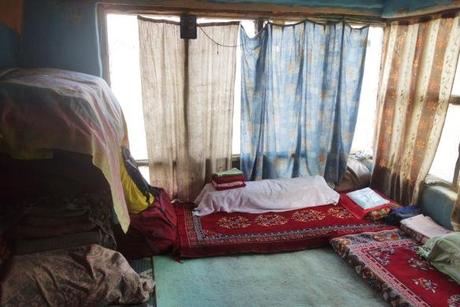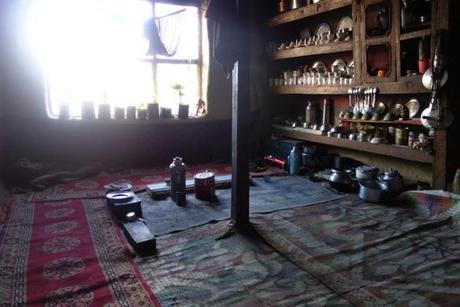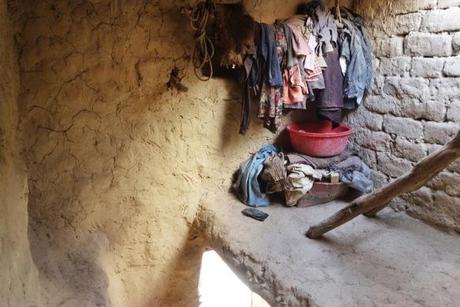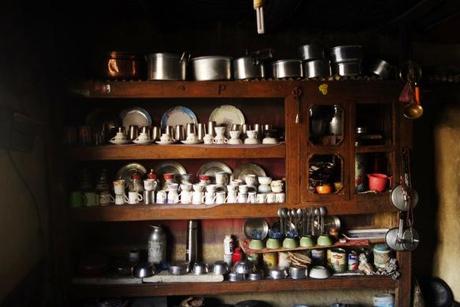“This is your life. Do what you love, and do it often. If you don’t like something, change it. If you don’t like your job, quit. If you don’t have enough time, strop watching tv. If you are looking for the love of your life, stop; they will be waiting for you when you start doing things you love… Travel often; getting lost will help you find yourself. Some opportunities only come once, seize them…”
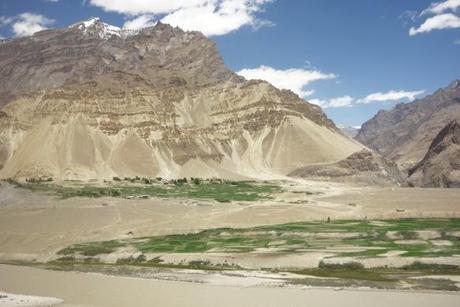
A smiling almost toothless man greeted us before ushering us upstairs and brining us tea before disappearing. His daughter, a twenty-two year old nun who usually lives in Dharamsala (a large Indian city with a very prominent Tibetan Buddhist community and many monasteries and nunneries) shyly began talking with us in her broken English as her fifteen year old monk brother helped her out. They showed us around the very small nunnery the village of twenty houses had to offer before sending us back on our way to the house with their key. (Imagine leaving a complete stranger with your key. We definitely aren’t in the United States anymore!) On our way back we got called over by a group of older villagers who were all sitting together drinking what we assumed was tea. Boy were we wrong!
After Kevin tasted a sip, he turned to me laughing and said, “it’s alcohol…” which explained why this group of villagers were so giggly and excited to have us join them. It was hilarious sitting surrounded by toothless old women and hunched over grandpas sipping on their homemade wine outside on the dirt. The one young man around (and possibly the only one who was not at least slightly tipsy) explained that at the beginning of the forth month of their Tibetan calendar there are three days of prayer, followed by the Chang (wine made from barley) drinking afternoon we happened to stumble upon. My favorite part though was the very chubby cheeked one year old who, with some coaxing and patience, eventually came over to play with me much to the delight of all the grandmas. It was also neat to see, once again, the sense of community small isolated villages such as this one have, something very different from anything you could find even in a small town in the states.
Here is the town we stayed in. As there is now a road on the other side of the river (and a bridge about half an hour away) this village seemed much more developed than the last ones we stayed in.
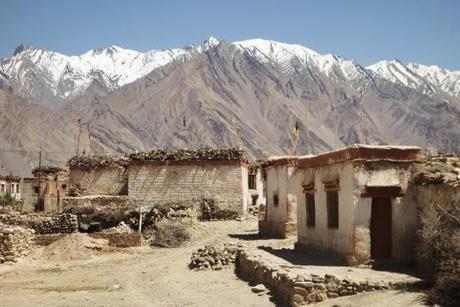
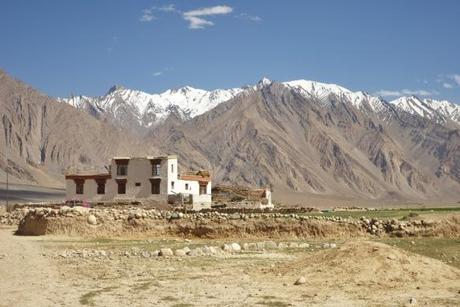
After watching many slightly intoxicated old women try and herd their sheep and goats back to their respected houses (everyday someone takes the whole flock to graze, so every night the animals must be sorted back into their proper homes) we sat down to eat a simple yet filling dinner of rice with a few cooked veggies.
Food in Zanskar is a challenge because not much grows above 4,000m and the food they can cultivate has to stay good through the winter when all access to these villages are closed due to snow. I asked what they did about food, and one of their daughters explained that under the house they dig a huge hole every year which they fill with the potatoes and carrots they grow and then cover it back up and periodically sprinkle it with water to keep them fresh throughout the winter. They also dry the few veggies they can grow in a makeshift greenhouse so that they have a bit of greens as well. Mostly they grow grain (barley) which they turn into flour and then into chapati, a flat bread found throughout India which is much thicker in Ladakh and Zanskar. Unfortunately they are unable to grow rice, another huge staple in their diet, so along with sugar and spices, they bring them in on donkeys after purchasing the items using government issued ration cards. My guess is since there is so little to go around, these cards ensure that no one can buy more than their portion of these precious items.
Here is their house. Like all homes in the area the animals lived below while the people lived above. We noticed that there were many new houses being constructed, most of which were being built with cement rather than the typical mud bricks. They explained that because of climate change the very dry area is now receiving more rain, something the mud huts cannot withstand and have therefore started to leak. Though the cement homes look extremely ugly compared to the traditional ones, I can understand wanting a dry home.
